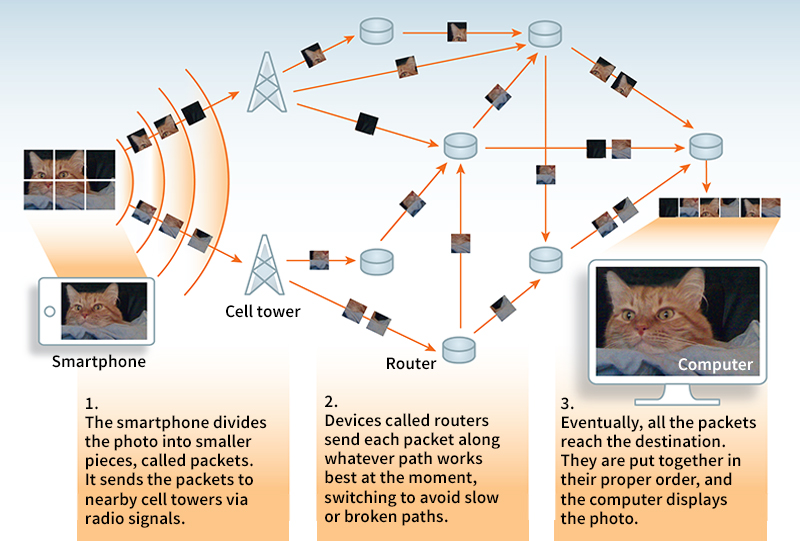Broadband communication is a term that refers to the high-speed transmission of data. This transmission may occur over a physical channel, such as a digital cable television system or digital subscriber line (DSL), which uses traditional copper telephone lines, or through the air, as in a satellite television system. The definition of broadband varies from country to country. In the United States, the Federal Communications Commission (FCC) requires a system to support a minimum transmission speed of 25 megabits per second (mbps) to qualify as broadband. A megabit is 1 million bits. Bits are the primary units that represent all digital data. A system is generally considered broadband even if it supports 25 mbps or more in only one direction of transmission.
In applications over telephone lines, a broadband system operates in a frequency band (range of radio frequencies) above, or sometimes including, the band that supports ordinary voice communication. Typically, these systems deliver tens of megabits per second, and some deliver over 100 mbps. Many broadband systems support these high bit rates while allowing telephone subscribers to place calls simultaneously over the same telephone line. Special equipment at facilities for processing and directing telephone transmissions enable telephone companies to handle broadband signals.

Broadband communication systems enable computer users to download (transfer) large data files in much less time than they could using a dial-up modem. A dial-up modem is a device that equips a computer to transmit and receive information over telephone lines using the frequency band that supports voice communication. Because broadband communication systems support high bit rates, they make possible digital “real-time” transmission of such programming as live concerts or sporting events. The transmission of high-definition television (HDTV) signals is possible only over a broadband communication system.
